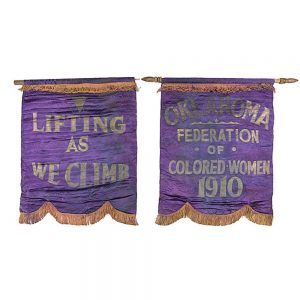The Crisis: Votes for Women, Magazine (August 1915)

The Crisis is the official magazine of the National Association for the Advancement of Colored People and was founded in 1910. Mary Talbert was a leading figure and intellectual in the suffrage movement during the 20thcentury. She is known for describing what would later be coined as “double jeopardy” in her famous writing “Women and Colored Women”. This issue of Crisis (vol 10, no. 4), was titled “Votes of Women” and pictures Sojourner Truth with Abraham Lincoln. It has a whole section of articles dedicated to suffrage efforts and testimonials. In this short essay, Talbert explains that Black women face both gender-based and race-based prejudice, making the struggle for voting “two-fold”. This document is significant because it there was a great division between the goals of Black and white women in the suffrage movement. Black women were not only fighting for voting rights and equal rights for women, but Black men as well.
“Lifting as They Climb” Banner, Oklahoma Federation of Colored Women (1910)

The National Association of Women’s Clubs (NACWC) was founded in July 1896, and served as a national umbrella group for regional Black women’s clubs and organizations. Their motto was “Lifting as We Climb”. The banner, a royal purple lined with gold fringe, stands out in its boldness. By 1916, there were over 300 registered clubs and almost 100,000 members in total. They promoted self-help, temperance, moral purity, and woman’s suffrage like other organizations led by white women. What set them apart were their overall goals to not only uplift women, but Black men and children as well. Due to Jim Crow, and other policies such as literacy tests, poll taxes and the grandfather clause restricted Black people, men and women. The franchisement of Black men through the 15thamendment did not gain them the same rights as white men, and Black women organized to fight against that issue as well. This banner is important for this exhibit because it displays their motto, and speaks for community uplift as a tenet for the organization. This source was found from the Smithsonian National Museum’s online collection.
